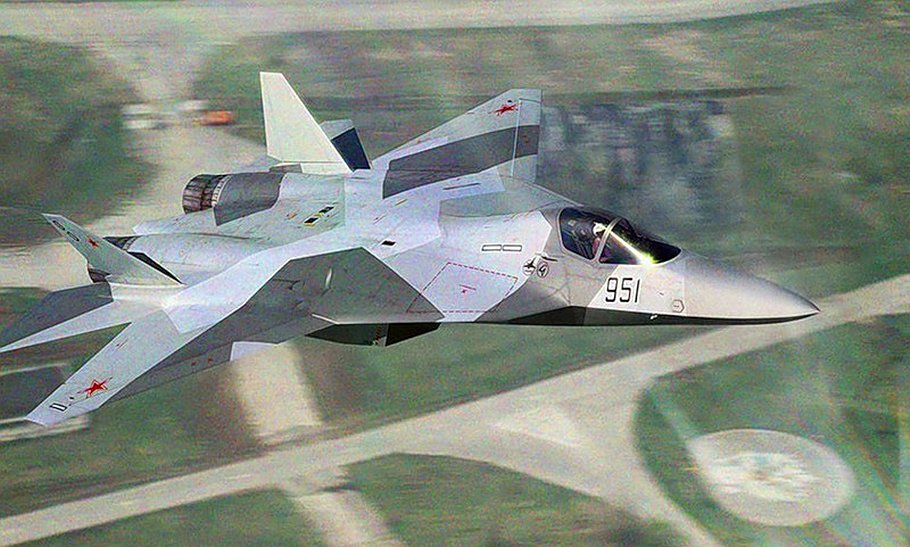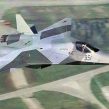
Russian Airpower Skydives to New Depths
Publication: Eurasia Daily Monitor Volume: 10 Issue: 216
By:

In theory, the Russian Air Force (Voyenno-Vozdushnye Sily—VVS) is in “permanent readiness,” with 80 percent of its assets in a serviceable condition. Nonetheless, the real condition of the VVS, according to an October 28 article in Kommersant, is far from this mythical status; only 42 percent of VVS aircraft are considered serviceable, and among its combat assets the figure is 49 percent (https://www.kommersant.ru/doc/2330080).
The non-permanent readiness condition of the VVS is apparently of little concern to the political-military elite, which at least officially pins its hopes on the State Armament Program to 2020 (Gosudarstvennaya Programma Razvitiya Vooruzheniy—GPV) to procure large numbers of new aircraft, including helicopters, as well as to carry out the modernization of existing platforms. Although the share of the GPV to 2020 is considerably larger than spending on modernizing the Ground Forces, it is unlikely these targets will be met, leaving the VVS less dependent upon procurement than repairs and upgrades for its post-2020 inventory (https://www.kommersant.ru/doc/2330080).
According to the Russian defense ministry’s well-publicized “action plan” launched in July 2013, the VVS aircraft serviceability figures would reach 55 percent by the end of the year, soaring to 75 percent in 2014 before climbing to 80 percent the following year (https://mil.ru/mod_activity_plan/constr/vvst/plan.htm). Judging by the present rates of serviceability, the achievement of the targets in the action plan would rely on procurement of new assets in near fantastical proportions. The same article in Kommersant noted that the worst cases for serviceability relate to Tu-160 and Tu-22M3 strategic bombers, MiG-29 and MiG-25 fighter jets, as well as transport and training aircraft; these figures are as low as 20 percent. The VVS has more than 690 aircraft in need of repair, but if the GPV to 2020 delivers its magic, then the problem will vanish. Ruslan Pukhov, the director of the Moscow-based Center for Strategies and Technologies, told Kommersant that the level of state funding for the GPV to 2025 will decline, compared with the current version, forcing the VVS to rely on repairs and other means of modernization (https://www.kommersant.ru/doc/2330080).
There is, however, no short supply of senior Russian defense officials who subscribe to voodoo economics, leaving them trusting in the power of the magic apparently imbued into the GPV to 2020. VVS Commander-in-Chief, Lieutenant-General Viktor Bondarev, is a true believer. Bondarev recently stated that, by 2020, the VVS’s share of modern aircraft will rise to “70 percent.” How this is arrived at is unclear, but the VVS commander also declares that “more than 100” new aircraft and 300 helicopters were procured in 2013. Bondarev also boasts that the VVS has the lion’s share of the spending in the GPV to 2020, at around 5 trillion rubles ($150.89 billion). On the issue of technical advances in the area of high technology avionics, Bondarev readily admits that foreign components are in use, and trusts in the “checks” made by specialized Russian laboratories; their use is therefore safeguarded in such a way as to ensure future combat missions (https://www.vpk-news.ru/articles/18235#).
Bondarev also has great confidence in the capacity of Russia’s defense industry to deliver sufficient numbers of transport aircraft. And when it comes to constructing new or modernizing existing airfields for the VVS, he says this is proceeding at a rate of “15 airfields” annually (https://www.vpk-news.ru/articles/18235#). However, President Vladimir Putin expresses less certainty on the technical aspects of rearming the Russian Air Force. On November 22, Putin toured the Klimov engine-building plant in St. Petersburg; Klimov JSC develops, manufactures and services engines for helicopters and fighter jets. Putin said, “The United Engine Corporation is also facing other pressing challenges, including with regard to combat aviation, which I already mentioned. In recent years, we have seriously increased the volume of orders for combat planes and helicopters within the framework of the State Armament Program. And I am talking about equipment with fundamentally new, better technological features.” Putin seems interested in determining the cost-effectiveness of the money poured into procurement for the VVS, while referring to the “challenges” facing Russia’s fifth-generation fighter program—the PAK-FA T-50 (kremlin.ru, November 23).
It seems that the pressing need for advances in the rate of procurement for the VVS is precisely tied to Pukhov’s assertion that the following GPV will not prove to be as large-scale. There are some glimmers of hope. Batches of Mi-8MTV-5 military transporters and Ansat-U training helicopters are being delivered. The latest “batches” of each platform were manufactured by the Kazan helicopter plant, part of the Helicopters of Russia holding. Interestingly, the reporting on these deliveries prefers not to offer precise figures, and reverts to the use of “batch” or “batches” (Interfax, November 26). Similarly, reporting on the upgrades to airfield infrastructure tends to shy away from precise details. On November 26, Interfax reported on a military airfield at Buturlinovka, Voronezh Region, which received its first Su-34 frontline fighter-bomber. Western Military District spokesman Colonel Oleg Kochetkov noted that: “Planes of this type are landing at Buturlinovka for the first time.” The airfield was able to receive and service Su-34 jets between flights since it had been equipped with “means of communication, lighting, landing radars, short-range navigation radio-technical systems” (Interfax, November 26).
Small deliveries of new aircraft, problems with the procurement of the fifth-generation fighter, manufacturing advanced avionics or constructing new airfields and maintaining existing airfields inhibit the modernization and combat readiness of the air force. Although commanders express optimism in the GPV to 2020, the present low rates of serviceable aircraft in the VVS presents a low jumping-off point for these modernization targets to work. If procurement targets prove to be unworkable, the answer may lie in another restructuring of the VVS.




